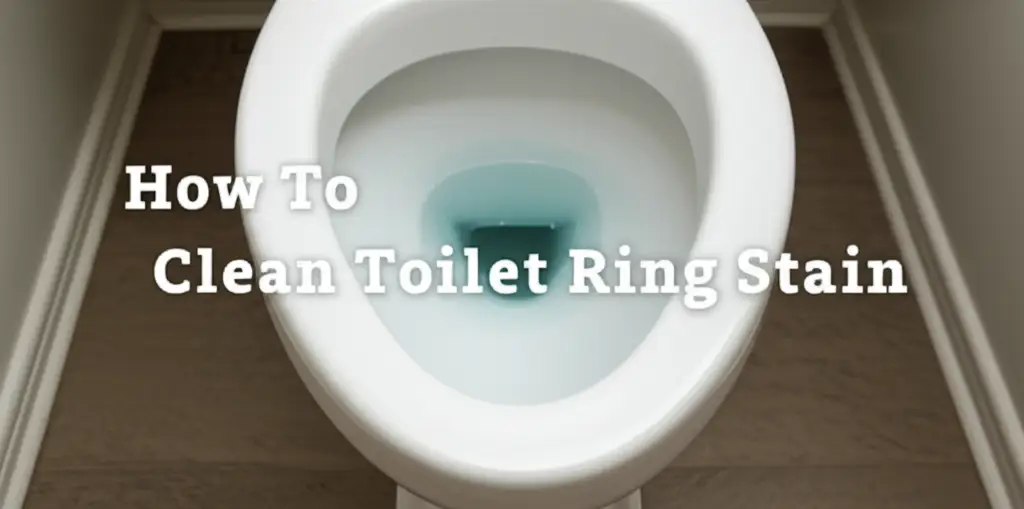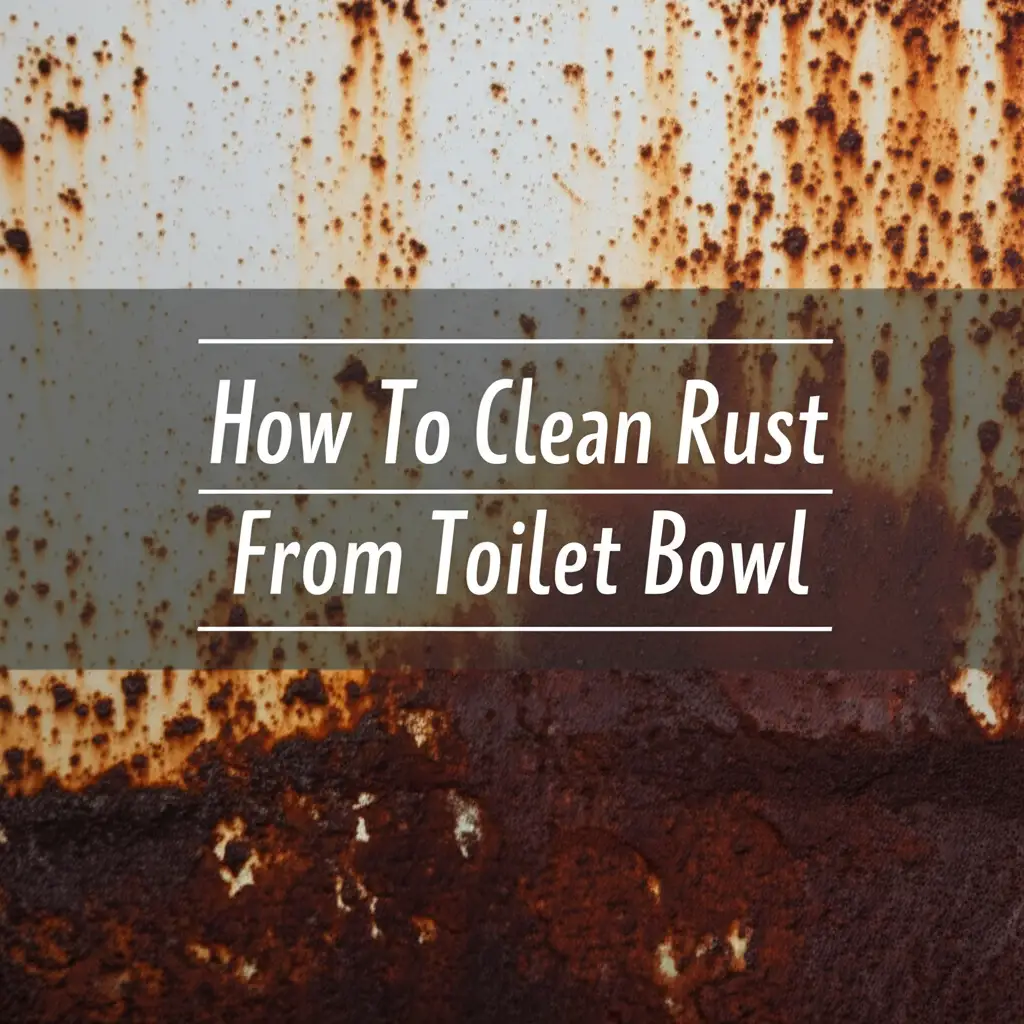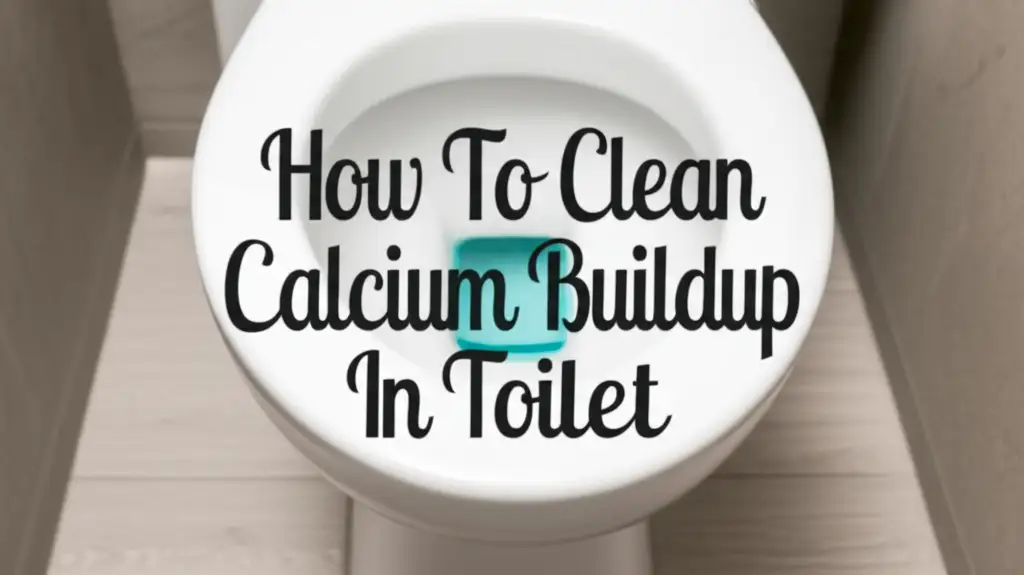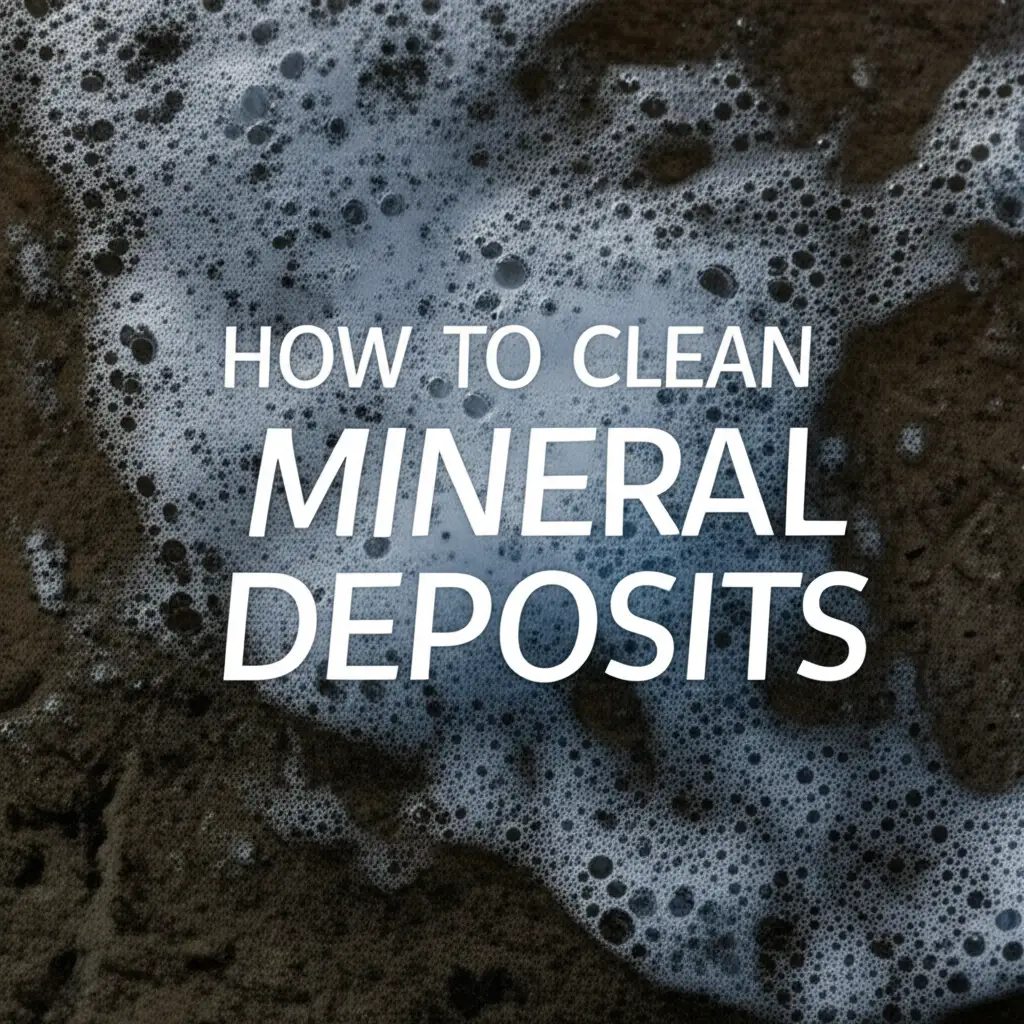· Home Cleaning · 19 min read
How To Clean Toilet With Pumice Stone
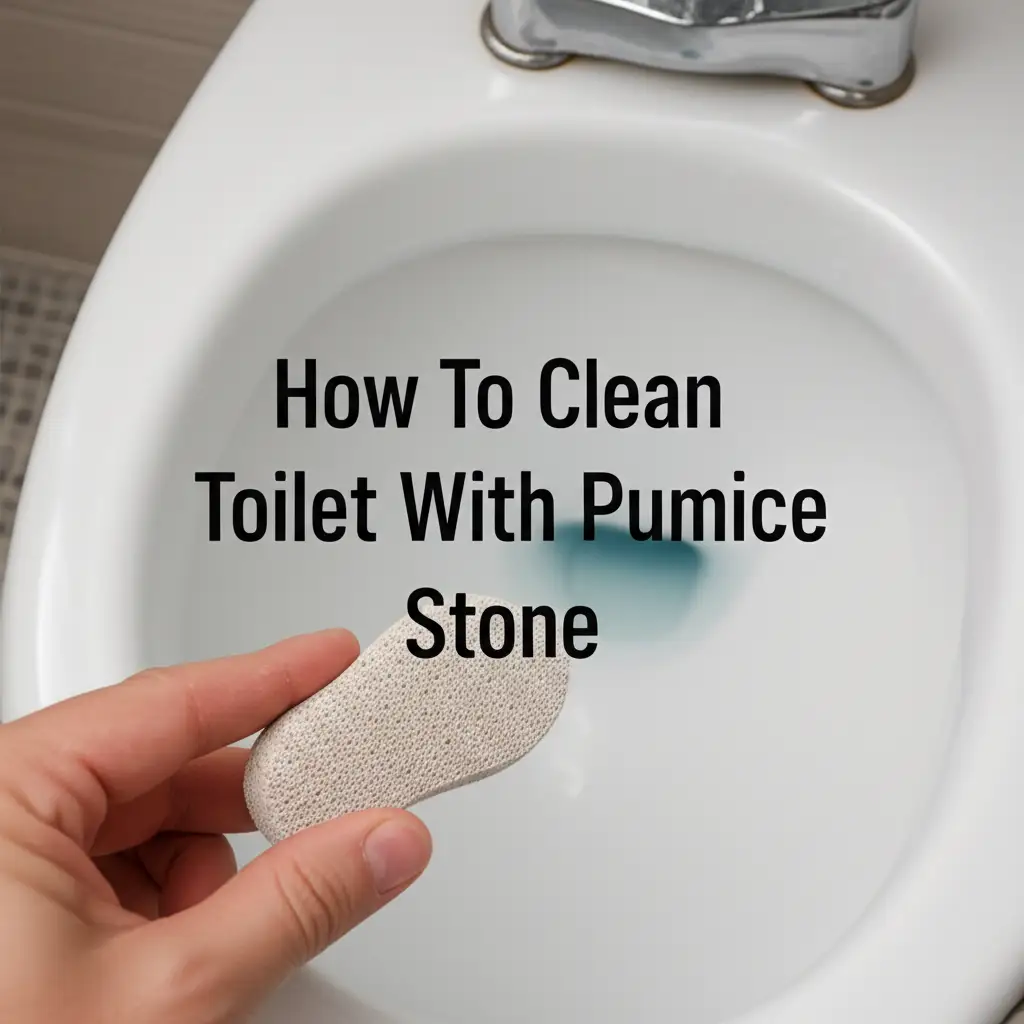
Unlock Sparkling Clean: How to Clean Your Toilet with Pumice Stone
Have you ever looked at your toilet bowl and sighed at those stubborn rings or unsightly stains? Hard water, mineral deposits, and rust can create marks that regular toilet brushes and chemical cleaners simply cannot remove. These persistent stains often make your bathroom look less than pristine. Many homeowners wonder about an effective solution for these specific problems.
Today, we will explore a powerful, yet gentle tool for tackling these tough stains: the pumice stone. Learning how to clean toilet with pumice stone can transform your bathroom. This guide covers everything from understanding how pumice works, to a step-by-step cleaning process. We will discuss safety, tips for best results, and how this method compares to others. Get ready to restore your toilet’s sparkle!
Takeaway:
- A pumice stone effectively removes stubborn hard water, mineral, and rust stains from porcelain toilet bowls.
- Always wet the pumice stone and the toilet surface thoroughly before scrubbing to prevent scratches.
- Use gentle, consistent pressure and test on an inconspicuous area first.
- Pumice is safe for porcelain when used correctly but avoid using it on plastic or enameled surfaces.
To clean a toilet with a pumice stone, first ensure the stone and the stained area are wet. Gently rub the pumice stone over hard water, rust, or mineral stains using light to medium pressure. The abrasive action will lift tough deposits without scratching porcelain when used correctly.
Understanding Pumice Stone for Toilet Cleaning
Pumice stone is a natural, porous volcanic rock. It forms when molten lava cools quickly, trapping gas bubbles. This process creates a lightweight, abrasive material. Its unique texture makes it effective for various cleaning tasks. For toilets, pumice excels at removing tough stains.
This stone is hard enough to scrape away stubborn deposits. Yet, it is soft enough not to scratch porcelain if used properly. The fine abrasive particles in pumice work like a super-fine sandpaper. They gently wear away hard mineral buildup. This includes hard water rings, rust marks, and limescale. Standard toilet brushes or mild cleaners often fail against these issues. Pumice provides a physical abrasion that breaks down these resilient stains.
Pumice stone specifically targets mineral-based stains. Water contains various minerals like calcium, magnesium, and iron. Over time, these minerals accumulate on surfaces. They form unsightly rings and streaks. Iron in water causes rust stains. Pumice helps you physically lift these deposits. It restores the original white surface of your toilet bowl. This natural tool offers a non-chemical solution for common bathroom problems.
Using a pumice stone is a mechanical cleaning process. You are not relying on chemical reactions to dissolve stains. Instead, you are gently scrubbing them away. This method provides direct contact with the problem area. It allows for focused stain removal. Many professional cleaners use pumice for tough jobs. It is a secret weapon against persistent toilet discoloration.
Always ensure you buy a cleaning pumice stone. These are often shaped for easy gripping. They may also have handles. This makes the cleaning process more comfortable and efficient. Do not confuse it with pumice stones used for personal care. Those might be too soft or shaped differently. For effective toilet cleaning, choose a dedicated cleaning pumice stone.
Is a Pumice Stone Safe for Your Toilet?
A common question arises about using an abrasive tool on porcelain: Is it safe? The answer is generally yes, but with important caveats. Porcelain is a durable, non-porous ceramic material. It forms the smooth, glossy surface of most toilet bowls. Pumice stone is softer than porcelain. This means it can remove stains without damaging the surface itself.
The key to safe use lies in technique. Always ensure both the pumice stone and the toilet bowl surface are wet. A dry pumice stone can act like sandpaper on dry porcelain. This risks creating fine scratches. Water acts as a lubricant, allowing the pumice to glide smoothly. It helps carry away the dislodged mineral particles. This ensures gentle abrasion.
Apply light to medium pressure when scrubbing. Avoid pressing too hard. Excessive force can still cause microscopic abrasions. Over time, these can dull the finish. It is always wise to test an inconspicuous area first. You can try a small spot inside the toilet bowl below the water line. This lets you observe the effect before cleaning the entire visible area.
Know when not to use a pumice stone. Avoid using it on toilet seats, plastic components, or any parts that are not porcelain. These materials are much softer than porcelain. A pumice stone will scratch them easily and cause irreversible damage. Some older toilets might have enameled cast iron bowls. These are also more prone to scratching than modern porcelain. If you are unsure about your toilet’s material, research its specifications.
In summary, a pumice stone is safe for porcelain toilet bowls when used correctly. Keep it wet, apply gentle pressure, and avoid non-porcelain surfaces. This careful approach helps you achieve a clean toilet without causing damage. You can restore your toilet’s appearance with confidence.
Gathering Your Toilet Cleaning Essentials
Before you begin the process of cleaning your toilet with pumice stone, you need to collect a few essential items. Having everything ready saves time and ensures a smooth cleaning experience. You likely already own most of these supplies. A prepared cleaning station makes the task much easier.
Here is a list of what you will need:
- Pumice Stone with a Handle: While a plain pumice stone works, one with a handle offers better grip and protects your hands. You can find these specifically designed for toilet cleaning at most hardware or cleaning supply stores.
- Rubber Gloves: Protecting your hands is important. Toilet bowls harbor germs, and prolonged contact with cleaning products or water is not ideal for skin. Gloves also improve grip on the pumice stone.
- Toilet Bowl Cleaner (Optional but Recommended): Use a standard liquid toilet bowl cleaner to pre-clean the bowl. This removes loose dirt and grime before tackling the tougher stains with pumice. It also helps disinfect the bowl. If you are looking for an alternative, consider how to clean toilet bowl stains without scrubbing, which might involve enzymatic cleaners.
- Paper Towels or Cleaning Cloths: You will need these to wipe away residue and dry surfaces. They are also useful for wiping the pumice stone clean during use.
- Bucket (Optional): A small bucket can be helpful if you need to remove water from the toilet bowl. This allows better access to stains below the waterline.
- Disinfectant Spray or Wipes: After scrubbing, a final disinfectant step ensures a truly hygienic clean. This is good practice for comprehensive bathroom sanitation.
- Safety Glasses (Optional but Recommended): While not strictly necessary for this task, safety glasses protect your eyes from splashes, especially when dealing with chemical cleaners.
Having these supplies organized and within reach prevents interruptions. It allows you to focus on the cleaning task at hand. With the right tools, you are ready to tackle those stubborn toilet stains effectively. Proper preparation sets the stage for a successful cleaning session.
Step-by-Step Guide: How to Clean Toilet with Pumice Stone
Cleaning your toilet with a pumice stone is a straightforward process. Follow these steps carefully for the best results and to ensure safety. This method effectively targets tough stains. It helps your toilet regain its pristine look.
1. Prepare the Toilet Bowl
First, put on your rubber gloves. If you are cleaning stains below the waterline, you need to lower the water level. You can do this in two ways. You can turn off the water supply valve behind the toilet. Then, flush the toilet once. This will empty most of the water from the bowl. Alternatively, you can use a small cup or bucket to scoop water out of the bowl. Place the scooped water into another bucket for disposal.
Next, apply your preferred liquid toilet bowl cleaner to the entire inside of the bowl. Let it sit for about 5-10 minutes. This pre-treatment helps to loosen general dirt and grime. It also disinfects the bowl’s surface. You can also learn how to clean black stuff in toilet bowl using specific methods. This initial cleaning step provides a cleaner surface to work on.
2. Wet the Pumice Stone and Surface
This is a critical step for preventing scratches. Fully submerge the pumice stone in the toilet water for at least 30 seconds. Ensure it is completely saturated. Also, make sure the area of the toilet bowl you are about to scrub is thoroughly wet. Water acts as a lubricant between the stone and the porcelain.
3. Begin Scrubbing Stains
Take the wet pumice stone. Gently start rubbing it over the hard water rings, rust stains, or mineral deposits. Use light to medium pressure. You should see a paste forming as you scrub. This paste is a mixture of water, pumice dust, and the removed stain particles. It indicates the pumice is working.
Work in small sections. Use circular motions or back-and-forth strokes. The key is consistent, gentle pressure. Do not press too hard, as this can still cause damage. The pumice stone will slowly wear down as you use it. This is normal and means it is effectively abrading the stains. Focus your efforts on the stained areas. Pay attention to the persistent rings and streaks. If you have concerns about the hole in the bottom of the toilet, address those separately.
4. Rinse and Inspect
After scrubbing an area, rinse it with water. You can flush the toilet if the water supply is on. If you removed the water, pour fresh water into the bowl to rinse away the paste. Inspect the area for remaining stains. If stains persist, repeat the scrubbing process. You might need multiple passes for very stubborn stains.
5. Final Cleaning and Maintenance
Once you are satisfied with the stain removal, perform a final flush. You can then clean the entire toilet as you normally would. Use an all-purpose cleaner for the outside of the bowl, the seat, and the lid. For the toilet seat, specifically, you might want to learn how to clean toilet seat without ruining it. Wipe down all surfaces. For ongoing cleanliness, consider regular maintenance. For example, knowing how to clean black ring under toilet rim can prevent future build-up.
Proper cleaning makes a big difference. This detailed process ensures thorough stain removal. It also maintains the integrity of your toilet.
Tips for Effective Pumice Stone Use
Using a pumice stone effectively involves more than just scrubbing. There are specific techniques and considerations that enhance its performance and protect your toilet. These tips ensure you get the best results while keeping your toilet safe. They help you master this valuable cleaning tool.
Keep It Wet, Always
This is the most crucial tip. A dry pumice stone can scratch porcelain. Always make sure the stone is fully saturated with water. The area of the toilet bowl you are scrubbing must also be wet. Water creates a slick barrier. It helps the pumice glide smoothly. It also suspends the fine abrasive particles and stain residue. This prevents them from grinding into the surface. Re-wet the stone often during cleaning if it starts to feel dry.
Start with Gentle Pressure
Begin scrubbing with light pressure. Observe how the pumice stone interacts with the stain. Increase pressure gradually if needed. You want to apply enough force to remove the stain, but not so much that you feel resistance or hear a harsh scraping sound. The goal is gentle abrasion. Listen to the sound the stone makes against the porcelain. A smooth, wet sound is good. A dry, gritty sound means you might be pressing too hard or need more water.
Test in an Inconspicuous Area
Before tackling prominent stains, always test the pumice stone in a hidden spot. Choose an area of the toilet bowl that is not easily visible. This could be below the waterline or near the drain hole. Scrub a small spot gently. Then, rinse and inspect for any signs of scratching or dullness. This simple test confirms the stone is safe for your specific toilet’s porcelain. It gives you confidence before proceeding with larger areas.
Work on Specific Stains
Pumice stones are excellent for targeted stain removal. Focus on the hard water rings, rust spots, and mineral deposits. Do not use the pumice stone for general cleaning. For general cleaning, a regular toilet brush and cleaner are more appropriate. Using pumice too broadly can wear down the toilet’s finish over time. Direct your efforts where they are most needed.
Clean the Pumice Stone During Use
As you scrub, the pumice stone will accumulate a paste-like residue. This is normal. It consists of fine pumice particles and removed stain. Periodically rinse the pumice stone under running water. This washes away the residue. A clean stone provides better contact with the stain. It maintains its effectiveness. You can also wipe it with a paper towel.
Consider Alternatives for Certain Stains
While pumice is powerful, it might not be suitable for every stain type. For organic stains or general grime, other cleaners are better. For example, if you have black mold, there are specific methods for how to clean black mold off wood, which often involve different types of cleaners than what you would use for mineral stains. For some stains, you might want to try how to clean toilet bowl stains with coke as an alternative. Pumice specifically targets mineral and rust stains. Knowing when to use which cleaner optimizes your cleaning efforts.
By following these tips, you can leverage the full power of a pumice stone. You will achieve a beautifully clean toilet while protecting its surface.
Pumice Stone vs. Other Toilet Cleaning Methods
When it comes to toilet cleaning, a pumice stone stands out for specific challenges. However, it is not a universal solution. Understanding its strengths and weaknesses compared to other methods helps you choose the right tool for the job. Each cleaning method offers distinct advantages.
Chemical Cleaners
Traditional toilet bowl cleaners often contain strong acids or bleaches. These chemicals are effective at dissolving organic matter, killing germs, and whitening surfaces. They work well on general grime, mold, and some common stains. However, many chemical cleaners struggle with heavy mineral deposits, hard water rings, and stubborn rust stains. These stains are chemically resistant. They require a different approach. Using a pumice stone provides a physical abrasive action that chemicals cannot replicate. It scrapes away what chemicals cannot dissolve. Some prefer how to clean toilet tank with baking soda for a more natural approach to general cleaning.
Toilet Brushes
A standard toilet brush is essential for daily or weekly cleaning. It removes loose dirt, helps distribute cleaner, and keeps the bowl generally tidy. Brushes are great for maintaining cleanliness. They are designed to reach all areas of the bowl. However, bristles are soft. They cannot provide the necessary abrasion to remove stuck-on mineral deposits or rust. They will simply glide over these hard stains. A pumice stone complements the brush by tackling the very specific stains that a brush cannot handle.
Natural Alternatives (e.g., Vinegar and Baking Soda)
Many people prefer eco-friendly cleaning solutions. Vinegar and baking soda are popular natural cleaners. Vinegar’s acidity can help dissolve some mineral deposits and limescale. Baking soda provides a mild abrasive action and deodorizes. When used together, such as learning how to clean with vinegar and baking soda, they can create a fizzing action. This can loosen dirt and mild stains. These natural methods are effective for light to moderate mineral buildup. They are also excellent for regular maintenance. However, for extremely tough, years-old hard water rings or deep rust stains, even vinegar and baking soda might not be strong enough. This is where a pumice stone becomes invaluable. It offers a mechanical advantage over these gentler chemical approaches.
Special Purpose Stain Removers
Some products are specifically formulated for rust or hard water stains. These often contain stronger acids than general toilet cleaners. They can be effective for severe stains. However, they can also be harsh on the environment and require careful handling. They might also need long dwell times. A pumice stone offers a chemical-free alternative. It allows you to target stains directly and remove them physically, often with less waiting time. This direct action provides immediate results.
In summary, a pumice stone is not a replacement for regular toilet cleaning tools. Instead, it is a specialized tool. It fills a specific gap in your cleaning arsenal. It is the go-to solution for those incredibly stubborn hard water, mineral, and rust stains that other methods simply cannot conquer. Incorporate it strategically for problem areas.
Maintaining a Clean Toilet & Preventing Stains
Cleaning a toilet with a pumice stone effectively removes existing stubborn stains. However, prevention is key to keeping your toilet sparkling longer. A consistent cleaning routine and understanding the causes of stains can significantly reduce the need for intensive scrubbing. Proactive steps save you effort in the long run.
Regular Cleaning Routine
The simplest way to prevent major stain buildup is consistent cleaning. Aim to clean your toilet at least once a week. Use a good quality toilet bowl cleaner and a toilet brush. This routine removes fresh grime, prevents mold growth, and addresses new mineral deposits before they become hardened. Swish the bowl thoroughly. Pay attention to the waterline and under the rim. Regular attention prevents minor issues from becoming major problems.
Address Hard Water Issues
Hard water is the primary culprit behind mineral deposits and hard water rings. If you live in an area with hard water, consider installing a water softener for your entire home. A water softener removes minerals like calcium and magnesium before they enter your pipes. This prevents buildup not just in your toilet, but also in showers, sinks, and appliances. It is a long-term solution. For a smaller scale, you can use specialized hard water cleaners more frequently. Some even suggest methods like how to clean toilet bowl stains without scrubbing, which can involve enzymatic or acidic cleaners designed for hard water.
Tackle Rust Early
Rust stains often come from iron in your water supply or old plumbing fixtures. If your water source contains high iron, a whole-house filter might be necessary. For isolated rust spots, act quickly. Rust becomes harder to remove the longer it sits. You can use rust-specific cleaners or acidic solutions like vinegar. Regularly inspecting the toilet for new rust spots helps you address them before they set in deeply.
Use a Toilet Tablet or Bowl Cleaner Regularly
Some toilet cleaning tablets or continuous bowl cleaners can help. These products release cleaning agents with each flush. They can help prevent mineral buildup and maintain freshness. However, choose these products carefully. Some can contain harsh chemicals. They might also affect internal toilet components over time. Always read product labels.
Clean the Toilet Tank
Many people forget to clean the toilet tank. Mineral deposits and even mold can accumulate inside the tank. These deposits can then wash into the bowl with each flush, contributing to stains. Periodically clean your toilet tank. You can use methods such as how to clean toilet tank with baking soda for a natural approach. Cleaning the tank ensures that the water entering your bowl is as clean as possible. This prevents new sources of stains.
Ensure Proper Ventilation
Moisture contributes to mold and mildew growth in bathrooms. Ensure your bathroom has good ventilation. Use an exhaust fan during and after showers. This reduces overall humidity. While not directly preventing hard water stains, it helps keep the toilet and surrounding area free from other types of undesirable buildup.
By combining the powerful stain removal of a pumice stone with these preventative measures, you can maintain a consistently clean and hygienic toilet. This comprehensive approach ensures your bathroom remains a pleasant and sanitary space.
FAQ Section
Q1: Can a pumice stone scratch my toilet?
A pumice stone can scratch a toilet if used improperly. Always wet both the pumice stone and the porcelain surface thoroughly before scrubbing. Water acts as a lubricant, preventing damage. Use light to medium pressure and test an inconspicuous area first. Avoid using it on non-porcelain surfaces like plastic or enamel.
Q2: What kind of stains does a pumice stone remove?
A pumice stone is most effective at removing stubborn mineral deposits. This includes hard water rings, limescale, and rust stains. These are the types of stains that often resist traditional chemical cleaners. It physically abrades these tough buildups from the porcelain surface.
Q3: How often can I use a pumice stone on my toilet?
Use a pumice stone only as needed for specific, stubborn mineral or rust stains. It is not for daily or weekly general cleaning. Over-reliance on abrasive cleaning can gradually wear down the toilet’s finish over many years. Regular toilet brushes and liquid cleaners are better for routine maintenance.
Q4: Do I need to drain the toilet water to use a pumice stone?
You might need to lower the water level if stains are below the waterline. You can do this by turning off the water supply valve and flushing the toilet. Alternatively, scoop out the water with a cup. This gives you better access to the submerged stains.
Q5: Can I use a pumice stone on other bathroom surfaces?
Only use a pumice stone on porcelain. Do not use it on plastic toilet seats, fiberglass tubs, acrylic showers, or tiled surfaces. These materials are softer than porcelain and will scratch easily. For other stone surfaces, like natural stone tile and grout, different cleaning methods are required. You can learn how to clean natural stone tile and grout with appropriate methods.
Q6: What should I do if the pumice stone leaves a residue?
As you scrub, the pumice stone will create a paste-like residue. This is normal. It consists of pumice particles and removed stain. Simply rinse the toilet bowl thoroughly with water after scrubbing. Flush the toilet several times to wash away all residue and reveal the clean surface.
Conclusion
You now know how to clean toilet with pumice stone effectively. This simple, yet powerful tool is a true game-changer for tackling those persistent hard water, mineral, and rust stains that regular cleaners cannot conquer. By following the steps outlined, you can safely restore your toilet’s pristine appearance. Remember the importance of wetting the stone and the surface, using gentle pressure, and testing first.
A pumice stone offers a non-chemical solution for challenging stains. It complements your regular cleaning routine. You no longer need to tolerate those unsightly rings. With proper use and consistent maintenance, your toilet will stay sparkling clean. This enhances your bathroom’s overall hygiene and appeal. Go ahead, give your toilet the deep clean it deserves with a pumice stone.
- toilet cleaning
- pumice stone
- hard water stains
- rust stains
- bathroom maintenance

